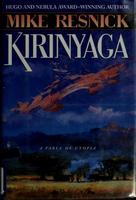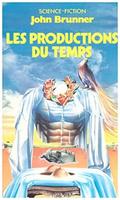Subject

photo credits: Wikimedia Commons
The Magazine of Fantasy & Science Fiction (usually referred to as F&SF) is a U.S. fantasy and science-fiction magazine, first published in 1949 by Mystery House, a subsidiary of Lawrence Spivak's Mercury Press. Editors Anthony Boucher and J. Francis McComas had approached Spivak in the mid-1940s about creating a fantasy companion to Spivak's existing mystery title, Ellery Queen's Mystery Magazine. The first issue was titled The Magazine of Fantasy, but the decision was quickly made to include science fiction as well as fantasy, and the title was changed correspondingly with the second issue. F&SF was quite different in presentation from the existing science-fiction magazines of the day, most of which were in pulp format: it had no interior illustrations, no letter column, and text in a single-column format, which in the opinion of science-fiction historian Mike Ashley "set F&SF apart, giving it the air and authority of a superior magazine".F&SF quickly became one of the leading magazines in the science-fiction and fantasy fields, with a reputation for publishing literary material and including more diverse stories than its competitors. Well-known stories that appeared in its early years include Richard Matheson's "Born of Man and Woman", and Ward Moore's Bring the Jubilee, a novel of an alternative history in which the South has won the American Civil War. McComas left for health reasons in 1954, but Boucher continued as sole editor until 1958, winning the Hugo Award for Best Magazine that year, a feat his successor, Robert Mills, repeated in the next two years. Mills was responsible for publishing Flowers for Algernon by Daniel Keyes, Rogue Moon by Algis Budrys, Starship Troopers by Robert Heinlein, and the first of Brian Aldiss's Hothouse stories. The first few issues mostly featured cover art by George Salter, Mercury Press's art director, but other artists soon began to appear, including Chesley Bonestell, Kelly Freas, and Ed Emshwiller. In 1962, Mills was succeeded as editor by Avram Davidson. When Davidson left at the end of 1964, Joseph Ferman, who had bought the magazine from Spivak in 1954, took over briefly as editor, though his son Edward soon began doing the editorial work under his father's supervision. At the start of 1966, Edward Ferman was listed as editor, and four years later, he acquired the magazine from his father and moved the editorial offices to his house in Connecticut. Ferman remained editor for over 25 years, and published many well-received stories, including Fritz Leiber's "Ill Met in Lankhmar", Robert Silverberg's "Born with the Dead", and Stephen King's The Dark Tower series. In 1991, he turned the editorship over to Kristine Kathryn Rusch, who began including more horror and dark fantasy than had appeared under Ferman. In the mid-1990s, circulation began to decline; most magazines were losing subscribers and F&SF was no exception. Gordon Van Gelder replaced Rusch in 1997, and bought the magazine from Ferman in 2001, but circulation continued to fall, and by 2011, it was below 15,000. Charles Coleman Finlay took over from Van Gelder as editor in 2015. Sheree Renée Thomas succeeded Charles Coleman Finlay, becoming the magazine's 10th editor in the fall of 2020. Source: Wikipedia (en)
Works about The Magazine of Fantasy & Science Fiction
There is nothing here
Editions published in The Magazine of Fantasy & Science Fiction 135
- Another Word for Map Is Faith
- Okanoggan Falls
- Five Thrillers
- The Political Prisoner
- Days of Wonder
- Against the Current
- Kiosk
- Stray
- Damascus
- The Calorie Man
- The Blemmye's Strategem
- The Great Caruso
- Dirty Old Town
- Ararat
- Created He Them
- Mr. Sakrison's Halt
- For Sale, Reasonable
- Birth of a Gardener
- The Tunnel Ahead
- The New You
- Another Rib
- Playscape
- Mighty Are the Meek and the Myriad
- How to Kiss a Hojacki
- Shucked
- Miscellaneous Notes from the Time an Alien Came to Band Camp Disguised as My Alto Sax
- Loob
- The Mask of the Rex
- City of the Dog
- The Revel
- Whatever Comes After Calcutta
- Jack-in-the-Box
- Painwise
- Corona
- We, in Some Strange Power's Employ, Move on a Rigorous Line
- The Merchant and the Alchemist's Gate
- The Test
- Kirinyaga
- Two Hearts
- Have Space Suit—Will Travel
- Blood
- Key Item
- The Productions of Time
- No Truce with Kings
- The Fun They Had
Subject - wd:Q937202


